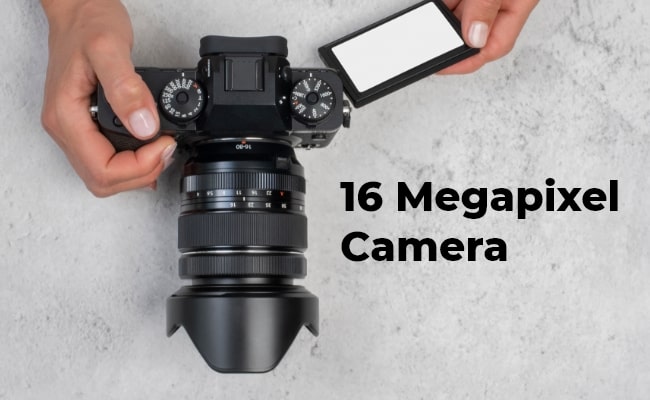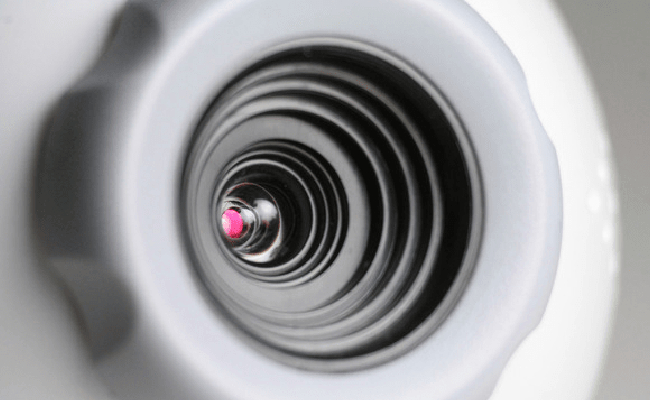16 Megapixel Camera: Capture Brilliance

A 16 megapixel camera provides the power to capture highly detailed, print-worthy photos. With approximately 16 million pixels on the image sensor, it offers far greater resolution and image clarity potential compared to lower-megapixel shooters. Read on to fully understand the capabilities of these brilliant imaging tools.
What is a 16 Megapixel Camera?
A 16 megapixel camera contains over 16 million tiny light-sensitive pixels arranged in a grid-like layout across the physical imaging chip inside. Most modern 16MP sensors have dimensions of around 4928 x 3264 pixels, providing a very high-resolution canvas for capturing intricate scene details.
With so many pixels available, 16MP cameras can produce images with incredible levels of clarity, sharpness, and resolution. This camera 16 megapixel empowers photographers to print out photos at very large sizes, heavily crop images while retaining detail, and create stunning photographic enlargements.
16MP Cameras: Use Cases
Thanks to major advancements in digital imaging technology, cameras with 16 megapixel sensors are now found across a wide range of camera types and price points. From phones to DSLRs, here are some of the most common applications where 16MP cameras deliver exceptional high-res image quality:
Security and Surveillance Systems
Beyond traditional cameras, 16 megapixel security cameras are also quickly coming down in price enough to integrate into the latest home, business, and government surveillance systems. Top security camera manufacturers like Reolink are now releasing the latest-generation PoE camera models with cutting-edge 16MP security camera image capture capabilities.
These enable unprecedented levels of visible fine detail in live footage streams and recordings - empowering users to much more easily identify faces, license plate numbers, clothing patterns, suspicious behaviors, and other visual clues. Reolink has unveiled its newest 16MP PoE security camera, the Reolink Duo 3 PoE.
Groundbreaking 16MP Dual-Lens PoE Camera
16MP UHD, Dual-Lens, Motion Track, 180° Wide Viewing Angle, Power over Ethernet, Color Night Vision.
Smart Phone Cameras
Smartphone manufacturers have rapidly adopted far higher resolution camera sensors as consumer photo quality demands intensify. Now, having dual 16 megapixel camera phone (or higher) rear cameras plus exceptional front-facing selfie cameras has become the new norm among premium phone releases.
Top models like the Apple iPhone 14 Pro Max and Samsung Galaxy S22 Ultra thrill mobile photographers with pro-grade photography tools right in their pockets. These pack in major megapixel muscle - often 16MP for both rear and front cameras.
Additionally, their advanced image processing and computational algorithms optimize the pixel data for brilliant, share-worthy social media imagery.
Digital Still Cameras
Within the world of dedicated digital still camera models spanning point-and-shoots up through DSLRs, 16 megapixel camera photo sensors have firmly settled into an extremely popular sweet spot choice among manufacturers.
Currently, popular interchangeable lens mirrorless cameras like the Fujifilm 16 megapixel camera X-T30 II, Canon 16 megapixel camera EOS M50 Mark II, and Olympus PEN E-PL10 all offer 16MP image sensors. This allows enthusiasts to capture gorgeous imagery perfect for large printing and aggressive cropping with tons of remaining visible detail.
On the DSLR side, intro-level models like the Nikon D3500 and Canon 16 megapixel digital camera Rebel T8i also equip capable 16MP sensors for stellar quality, even among lower-cost camera options targeting new photographers getting started.
What Determines 16 Megapixel Camera Quality?
Certainly, resolution plays a major role in governing overall image quality potential. Yet plenty of other camera hardware and software factors substantially impact the sharpness, clarity, and detail visible in your final processed JPG and video imagery. Let's explore four of the most crucial elements beyond just megapixels alone that determine 16 megapixel camera quality:
Sensor Physical Size
Perhaps surprisingly, the physical size of a digital camera's image sensor matters greatly. Larger sensors featuring the same 16MP (or more) resolutions can gather far more total scene light compared to smaller versions fitting into smartphones and lower-end cameras.
This gives the pixels more pure light data to work with, in turn reducing ugly visual noise patterns and improving dynamic range. Large 'full frame' sized sensors, in particular, manipulate light more effectively overall compared to the smaller APS-C and Micro Four Thirds sizes prevalent in consumer mirrorless cameras.
Sophisticated Image Processing Algorithms
Behind the scenes, after an image gets captured, a camera's embedded image signal processor is the real magic that makes pixels shine. Here, complex proprietary software algorithms execute critical adjustments, maximizing picture quality attributes before the final JPEG output.
Advanced multi-step processing analyses the raw sensor data, then tweaks and optimizes the hell out of it! Some key areas of improvement include noise reduction, sharpening, tone curves, color reproduction, dynamic range expansion, and compression efficiency.
Lens Optical Quality
A powerful 16MP camera remains only half the equation - quality lens glass with sufficient resolving detail is imperative to maximize sensor resolution. Poor lens elements introduce visible distortions, chromatic aberration colors, softness around edges, lack of sharpness, and dullness. Alternatively, invest in high-end multi-element optics made with premium glass and advanced coatings to fully reveal the intricate details 16MP makes possible.
Other performance areas that influence 16MP capture quality include maximum aperture, autofocus speed/accuracy, optical stabilization effectiveness, and physical durability. None of those extra megapixels matter much, shooting through crappy lenses.

ISO Low-Light Sensitivity
One often overlooked capability determining 16MP camera quality is high ISO low-light sensitivity. What's the deal with ISO? In digital photography, ISO determines how sensitive the image sensor is to incoming light.
Using higher ISO levels allows cameras to keep shooting at fast shutter speeds necessary to prevent blur, even under dim conditions. However, most cameras suffer from ugly graininess and muddy details as ISO rises.
Basics of Megapixels and Resolution
Megapixels and resolution still remain key specifications to compare when evaluating camera upgrades. Let's demystify what these terms actually signify:
What is Resolution?
Resolution refers to the maximum number of independent pixel dots comprising the image sensor's effective area - arranged in photo sites across vertical and horizontal axes. More specifically, camera resolution equals the pixel columns multiplied by pixel rows. Some common megapixel counts and associated mega-pixel dimensions include:
- 4 MP = 2448 x 3264 pixels
- 12 MP = 4000 x 3000 pixels
- 16 MP = 4928 x 3264 pixels
- 20 MP = 5472 x 3648 pixels
- 24 MP = 6000 x 4000 pixels
How Many Megapixels is Good for a Camera?
Determining sufficient resolution is part art, part science, balancing both artistic needs and technical specs. Some suggested sweet spots by camera segment include:
Ideal minimums:
- Phone cameras: 12MP
- Entry-level consumer cameras: 16MP
- Mid & pro-level mirrorless/DSLRs: 20MP+
Equipping 12 megapixels and beyond allows even smartphone shooters to capture highly detailed images for digital sharing, waist-up prints, and basic enlargements. Jumping up to 16MP benefits mid-range interchangeable lens cameras by adding flexibility for more aggressive cropping and larger physical print sizes.
16 Megapixel vs. 18 Megapixel vs. 20 Megapixel Camera: Which one is Better?
If 16MP delivers such great quality already, is it even worth considering 18MP or 20MP sensors instead? Let's compare some key differences between these common options to evaluate which best aligns with your photography:
16 Megapixel
As discussed earlier, 16MP sensors strike an outstanding balance of resolution and reasonable file sizes. Modern 16MP imagers output brilliant, highly detailed photos that are more than sufficient for displaying digitally, significant cropping flexibility, and printing at very large poster sizes approaching 16 x 20 inches.
18 Megapixel
Stepping upwards slightly to 18MP outputs incrementally larger images with a touch more resolution compared to 16MP while keeping file sizes reasonably efficient. This offers a bit more cropping freedom for discerning photographers to inspect imagery at 1:1 pixel levels on-screen.
20 Megapixel
Now we reach territories enabling the largest possible prints with max details and sharpening capacity thanks to more total pixels. Hypothetically, 20MP cameras can output stunning 20x30 inch prints, yet likely start showing weaknesses enlarging quite that extremely in reality. Still, having around 20% more pixels over 16MP does provide some nice upgrade room for pickier applications tolerating slightly bigger file sizes, too.
In summary, while 20MP rigs theoretically capture the most possible detail of these three classes, expect only modest visible differences in practice over 16MP models unless enlarging prints tremendously or cropping aggressively time after time.
FAQs
Is 16 megapixels good for a camera?
Absolutely - At 16MP resolution, cameras provide outstanding resulting image quality with tons of resolving detail and cropping flexibility. Using quality modern lenses, 16MP cameras yield extremely sharp photos with excellent textures and clarity.
Do more megapixels guarantee higher picture quality?
Not at all. While more resolution can enable clearer photos with the advantage of oversampling during downsizing, many other crucial camera characteristics, including dynamic range, noise levels, image stabilization, metering, optics quality, aperture size, and processing algorithms actually determine perceived sharpness and quality in the end.
What is the average price range for 16MP cameras today?
Pricing varies immensely for the latest generation of cameras featuring 16MP sensors depending greatly on the camera body style, physical size, overall quality, and intended buyers. Decent basic compact point-and-shoot 16MP cameras now cost around $250 to $400.
Conclusion
Due to remarkable advancements in digital camera technologies in recent years, 16MP sensors now strike an outstanding balance of bountiful resolution detail paired with very manageable file sizes compared to even higher megapixel rivals.
Cameras equipped with 16MP imagers empower photographers possessing nearly any experience level or budget to capture absolutely stunning, highly detailed photos. Are you looking forward to the 16MP security cameras? Share your thoughts with us in the comment section below and we'd love hear from you!
Search
Be in the Know
Security insights & offers right into your inbox

